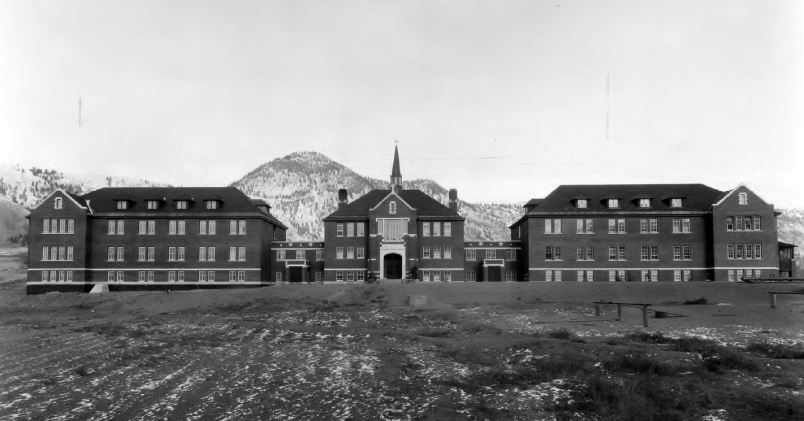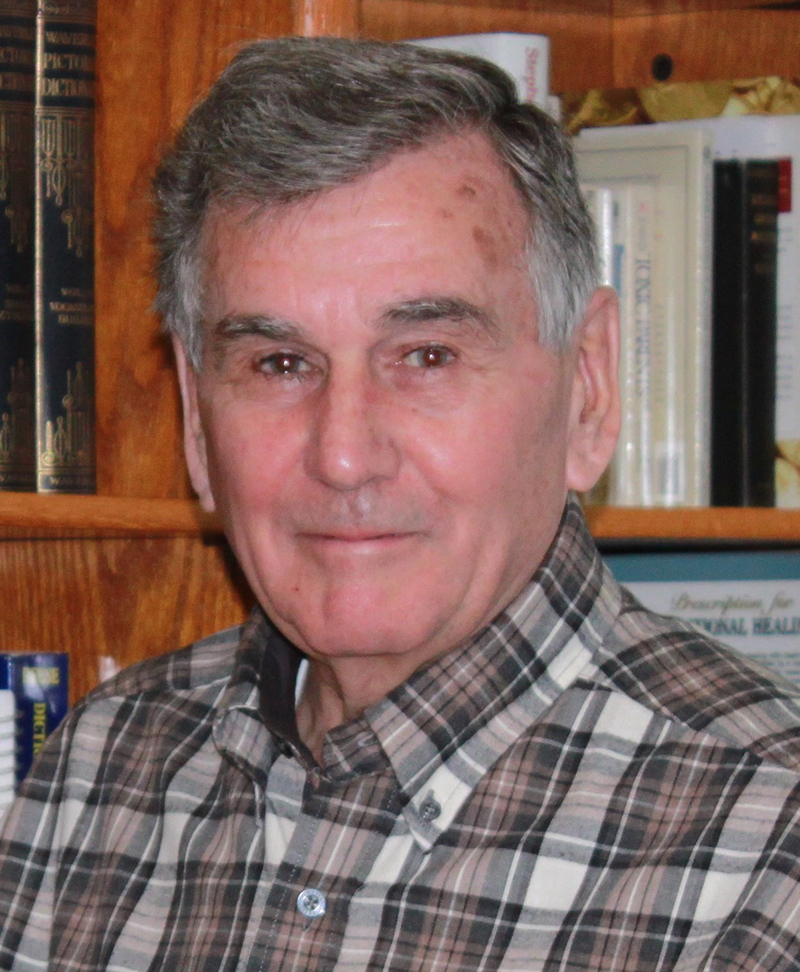By Wayne Douglas Weedon

Photograph courtesy of Archives Deschâtelets-NDC, Richelieu.

Food for Thought
I used to live in Holman Island, now known as Ulukhaktok, a hamlet in the Canadian Arctic. In the spring of 1966, on a daily basis, aeroplanes were landing at Holman Island and other settlements, bringing students from residential schools who had never returned home in the ten to twelve years they had been away at school.
Also in 1966, Agnes Carpenter, a former residential school student living in Sachs Harbour, came to Holman Island. She was travelling throughout the Arctic to solicit affidavits from residential school survivors. For several years she had been taking these affidavits to the Royal Canadian Mounted Police, and to various newspapers, including the Vancouver Sun and the Edmonton Journal, as well as to Ed Ogle from Time (Canada), and to two well-known writers, Pierre Berton and Farley Mowat. Everyone displayed sympathy and gave promises of helping her to have her accusations published; but somehow, none of her stories ever appeared in print. Agnes asked me, “Have you read the fairy-tales that publishers are passing off as factual? The old people are convulsed with laughter when I read to them some of these outlandish stories about us and our way of living.”
Agnes thought she had found a friend and confederate in Duncan Pryde who was running in the first election for members of the newly formed North West Territorial Council. Pryde promised, when elected to the Council, he would use his influence to bring the ill treatment of children in residential schools to the attention of newspapers, the police, and the government hierarchy. When Pryde volunteered to solicit more stories while on his campaign trail and to take them to Ottawa, Agnes handed over to him her folder of affidavits. Pryde, along with the collection of stories, vanished, never to be seen by Agnes again.
A few years later, Nunaga: My Land, My Country, a book ghost written by Ed Ogle but credited to Pryde, was published. Despite being a biased, one-sided account, this book is considered a reliable source of true Arctic history, and is often quoted. However, it does not mention the kidnapping and forced enrollment of children in residential schools as described in the affidavits that Carpenter had handed over to Pryde. Instead, this book states, “When the white man arrived in the Arctic to stay, even the older and most traditional Eskimos realized that their children must get a new kind of education, a white man’s education to make their way in the changing world”. Rather than describing how children were subjected to malnourishment, forced labour, physical abuse, sexual abuse, rape, murder, forced sterilization, and other atrocities; including being cramped together in unventilated dormitories with beds no more than a foot apart, this book states, “They [the students] lived in warm, comfortable residences with lots of room and even cupboards and furniture of their own. They soon became accustomed to three solid meals a day, and grown accustomed to sleeping on soft beds between clean sheets. They learned to like that way of life”.
Carpenter’s allegations have been continuously ignored and nobody associated with Canadian residential schools has ever been brought to court to face their crimes. When Agnes and other former students started contacting lawyers, seeking justice, the Canadian federal government provided immunity from prosecution to everyone who was involved in Residential schools by creating The Truth and Reconciliation Commission (TRC). The TRC was authorised to award compensation to anyone who could prove they had attended a residential school.
Because no school records have been available, it has been very difficult, and, in some cases, impossible for some to prove they had attended a residential school. The TRC has recorded stories from former students and they are ensuring that these stories are forever hidden from history, and never published, not even with fictitious names to protect the innocent.
Eric DeJaeger, an Oblate priest was brought to trial and convicted of sexually abusing Inuit children and committing other perverse acts. Unlike anyone working in Residential schools, this priest, along with many other fugitive priests, such as Johannes Rivoire, are not protected from prosecution under the TRC umbrella. However, to escape justice, many priests have fled to Europe.
After more than thirty years Canada is still refusing to apply to have Father Rivoire extradited from his sanctuary in France, and it was not the Canadian government, the RCMP, nor Interpol who was responsible for bringing DeJaeger to justice, it was Lieve Halsberghe who volunteers for SNAP, the Survivors Network of Those Abused by Priests. The court documents concerning pedophiles such as DeJaeger and Rivoire are freely available to all Canadians. These X-Rated documents with stories similar to the ones in Agnes Carpenter’s collection of affidavits, provide much food for thought.
Wayne Weedon is an Indigenous Manitoba writer of novels and short stories. To sample his wonderful work go to Wattpad.com.
